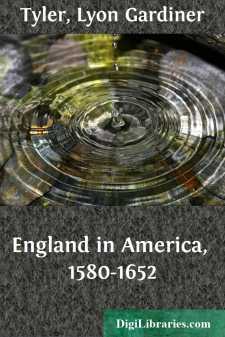Categories
- Antiques & Collectibles 13
- Architecture 36
- Art 48
- Bibles 22
- Biography & Autobiography 813
- Body, Mind & Spirit 141
- Business & Economics 28
- Children's Books 12
- Children's Fiction 9
- Computers 4
- Cooking 94
- Crafts & Hobbies 4
- Drama 346
- Education 46
- Family & Relationships 57
- Fiction 11825
- Games 19
- Gardening 17
- Health & Fitness 34
- History 1377
- House & Home 1
- Humor 147
- Juvenile Fiction 1873
- Juvenile Nonfiction 202
- Language Arts & Disciplines 88
- Law 16
- Literary Collections 686
- Literary Criticism 179
- Mathematics 13
- Medical 41
- Music 40
- Nature 179
- Non-Classifiable 1768
- Performing Arts 7
- Periodicals 1453
- Philosophy 64
- Photography 2
- Poetry 896
- Political Science 203
- Psychology 42
- Reference 154
- Religion 513
- Science 126
- Self-Help 83
- Social Science 81
- Sports & Recreation 34
- Study Aids 3
- Technology & Engineering 59
- Transportation 23
- Travel 463
- True Crime 29
England in America, 1580-1652
Categories:
Description:
Excerpt
CHAPTER I
GENESIS OF ENGLISH COLONIZATION
(1492-1579)Up to the last third of the sixteenth century American history was the history of Spanish conquest, settlement, and exploration. Except for the feeble Portuguese settlements in Brazil and at the mouth of the La Plata, from Florida and the Gulf of Mexico, around the eastern and western coasts of South America, and northward to the Gulf of California, all was Spanish—main-land and islands alike. The subject of this volume is the bold assertion of England to a rivalry in European waters and on American coasts.
How came England, with four millions of people, to enter into a quarter of a century of war with the greatest power in Europe? The answer is that Spain was already decaying, while England was instinct with the spirit of progress and development. The contrast grew principally out of the different attitude of the two nations towards the wealth introduced into Europe from America, and towards the hitherto established religion of the Christian world. While the treasure from Mexico and Peru enabled Charles V. and Philip II. to carry on great wars and to establish an immense prestige at the different courts of Europe, it created a speculative spirit which drew their subjects away from sober employment. For this reason manufacturing and agriculture, for which Spain was once so distinguished, were neglected; and the kingdom, thinned of people and decreasing in industry, grew dependent for supplies upon the neighboring countries.
On the other hand, the treasures which destroyed the manufactures of Spain indirectly stimulated those of England. Without manufactures, Spain had to employ her funds in buying from other countries her clothing, furniture, and all that was necessary for the comfort of her citizens at home or in her colonies in America. In 1560 not above a twentieth part of the commodities exported to America consisted of Spanish-manufactured fabrics: all the rest came through the foreign merchants resident in Spain.
Similar differences arose from the attitude of the two kingdoms to religion. Philip loved to regard himself as the champion of the Catholic church, and he encouraged it to extend its authority in Spain in the most absolute manner. Spain became the favored home of the Inquisition, and through its terrors the church acquired complete sovereignty over the minds of the people. Since free thought was impossible, private enterprise gave way to mendicancy and indolence. It was not long before one-half of the real estate of the realm fell into the hands of the clergy and monastic orders.
In England, on the other hand, Henry VIII.'s quarrel with the pope in 1534 gave Protestantism a foothold; and the suppression of the convents and monasteries in 1537-1539 put the possibility of the re-establishment of papal power out of question. Thus, while the body of the people remained attached to the Catholic church under Edward VI. and Queen Mary, the clergy had no great power, and there was plenty of room for free speech....


